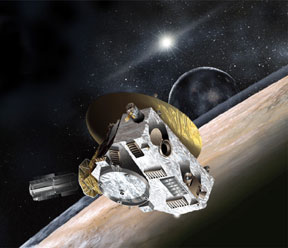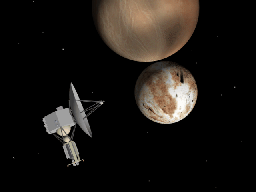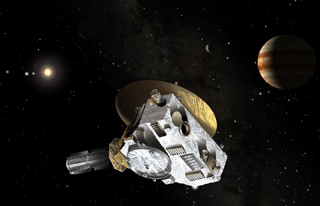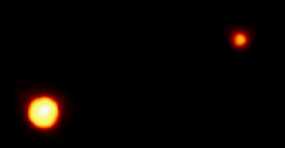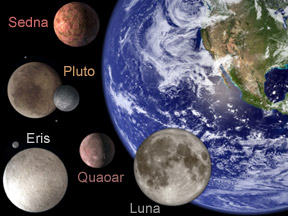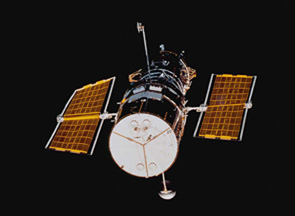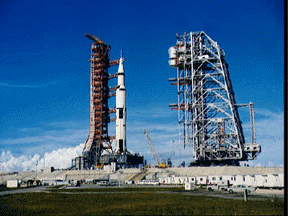Click on image for full size
Image courtesy Johns Hopkins University Applied Physics Laboratory/Southwest Research Institute.
Related links:
Movie of the New Horizons mission (6.4 MB QuickTime)
Movie of the launch of the New Horizons mission (5.5 MB MPEG)
Movie of the path of New Horizons through our Solar System (4.7 MB QuickTime)
New Horizons mission site at Johns Hopkins University Applied Physics Laboratory
New Horizons Mission to Pluto
NASA is sending a spacecraft to Pluto. The spacecraft is named New Horizons. New Horizons, which is a robot, will be the first spacecraft to visit Pluto.
New Horizons blasted off in January 2006. New Horizons will get a slingshot boost from Jupiter when it flies by that giant planet in February 2007. The boost from Jupiter will add 4 km/s (9,000 mph) to the spacecraft's speed.
New Horizons will get to Pluto in 2015. It will study Pluto as it flies by the icy world. It will also study Pluto's big moon Charon.
After the spacecraft passes Pluto, it will study at least one Kuiper Belt Object (KBO). KBOs are giant iceballs that orbit beyond Pluto. Some scientists consider Pluto "just another KBO" and don't think it should be called a planet. Other astronomers disagree, and think Pluto is a planet.
Either way, New Horizons should teach us a lot about Pluto and the Kuiper belt!
New Horizons zoomed away from Earth faster than any other spacecraft in history after its launch. When its engine turned off, it was going 16 km/s (36,300 mph). When Apollo astronauts went to the Moon, it took them three days to get there. New Horizons passed the Moon nine hours after it took off! The spacecraft crossed the orbit of Mars in April 2006. It zipped through the asteroid belt between May and October of 2006. New Horizons took its first picture of Pluto (from very, very far away!) in September 2006.
So far, all of the instruments on New Horizons are working fine. Keep up the good work, New Horizons!


